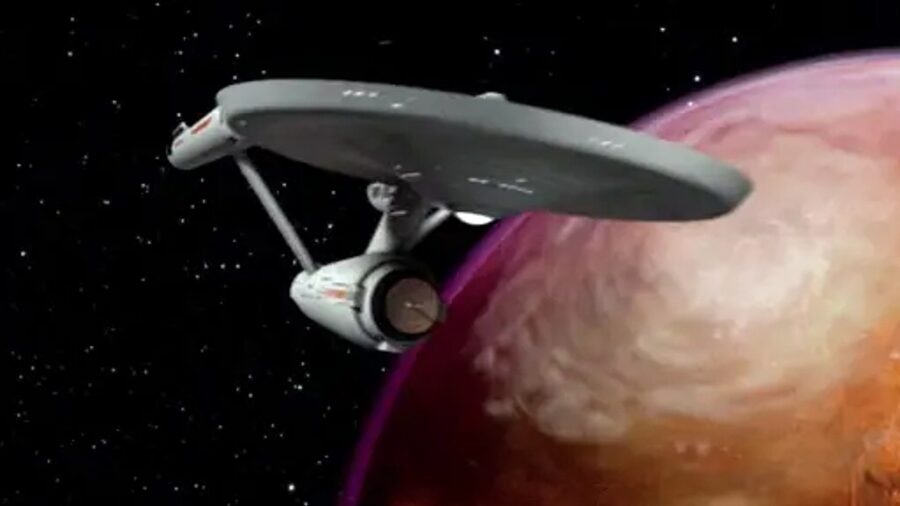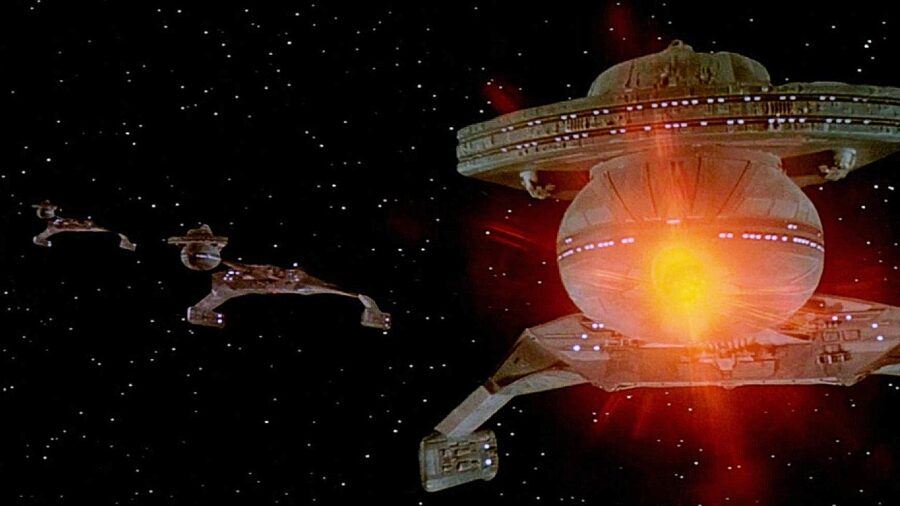How The Blaster Beam Made Star Trek Sound Iconic

Have you ever wondered how they made that strange and otherworldly ‘bwong’ sound surrounding V’ger in Star Trek: The Motion Picture from 1979? Well, it doesn’t come from a space-age synthesizer, but it is made by an instrument called Blaster Beam, and no, it’s not what you are thinking. This blaster beam doesn’t shoot lasers but creates sounds that have been warping our minds for decades.
Blaster beam was only used for the second time in Star Trek: The Motion Picture. Before Star Trek, the blaster beam can be heard in Wonder Woman Season 3, released the same year. At the time, synthesizers started to become more frequently used in film scores. However, Jerry Goldsmith took a different approach to Star Trek: The Motion Picture.
He decided to use the blaster beam as the voice of V’ger and this turned out to be a stellar move. It perfectly captured the mysterious and menacing nature of the unknown alien force. This futuristic sound instantly set V’ger apart from anything seen and heard before in Star Trek, while the blaster beam itself set the entire franchise apart from anything heard before when it comes to film scores.
Blaster beam was only used for the second time in Star Trek: The Motion Picture.
Goldsmith’s innovations didn’t stop there. He used the blaster beam to create a stark contrast between alien sounds and known orchestral notes in Star Trek’s rich soundtrack. The blaster Beam sounds cut off the already established Klingon militaristic theme during the Klingon battle sequence. The clash of sounds reflected the battle that was being waged against the unknown force, which is later revealed to be V’ger. The blaster beam was a hint.
American child actor turned musician Craig Huxley, who played Peter Kirk (Captain Kirk’s nephew) in Star Trek: TOS, refined the instrument and eventually patented his design on the blaster beam in 1984.
By doing so, Goldsmith turned the blaster beam into a storytelling tool for his Star Trek: The Motion Picture soundtrack. This is what makes the film’s sound iconic and recognizable among fans.

Essentially, the blaster beam is a long, metal or aluminum beam with strings stretched along its length. Musicians can play it by striking or bowing the strings, which then produces the popular futuristic sound. It was first designed in the early 1970s by John Lazelle and first used by Francisco Lupica. However, American child actor turned musician Craig Huxley, who played Peter Kirk (Captain Kirk’s nephew) in Star Trek: TOS, refined the instrument and eventually patented his design on the blaster beam in 1984.
Some other films in which a blaster beam can be heard include Star Trek II: The Wrath of Khan, Poltergeist, and Back to the Future II and Back to the Future III.
Jerry Goldsmith heard the effects that the unique instrument was able to emit and instantly recruited Huxley for Star Trek: The Motion Picture.

Blaster beam has become a rather popular instrument in pop culture since its successful use in space opera. Some other films in which a blaster beam can be heard include Star Trek II: The Wrath of Khan, Poltergeist, and Back to the Future II and Back to the Future III. Moreover, it can be heard in the TV series Star Trek: TNG, and recently, blaster beam was used as the sound of the Shrike, Captain Vardic’s ship in Star Trek: Picard Season 3.
Blaster Beam has built its own legacy over time, and what added to that status is the fact that it made Star Trek sound iconic. Goldsmith admitted he struggled to finish the soundtrack for the now eponymous film just days before the set premiere date, and if it wasn’t for blaster beam, we might have never seen one of the greatest creations in the sci-fi genre.













